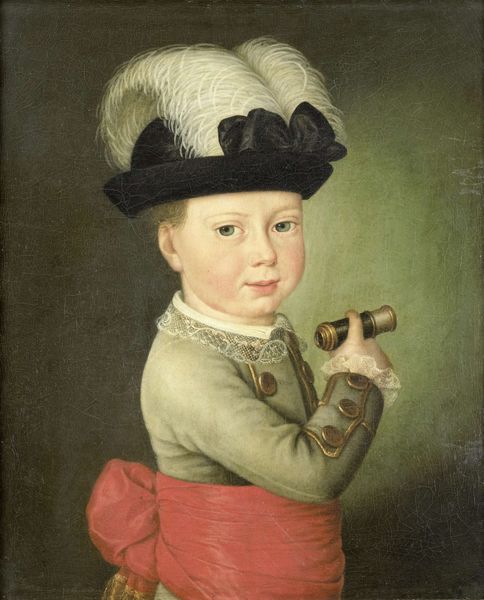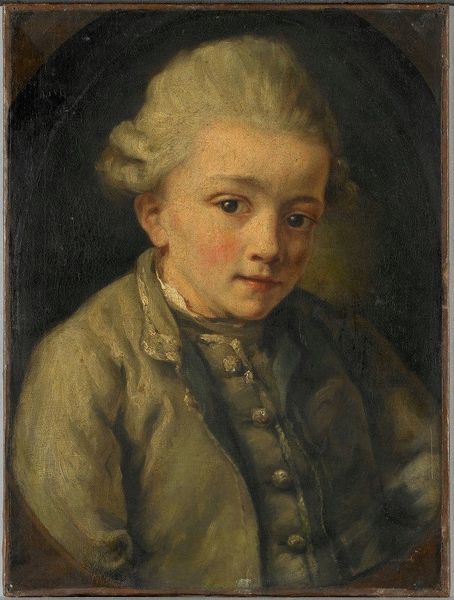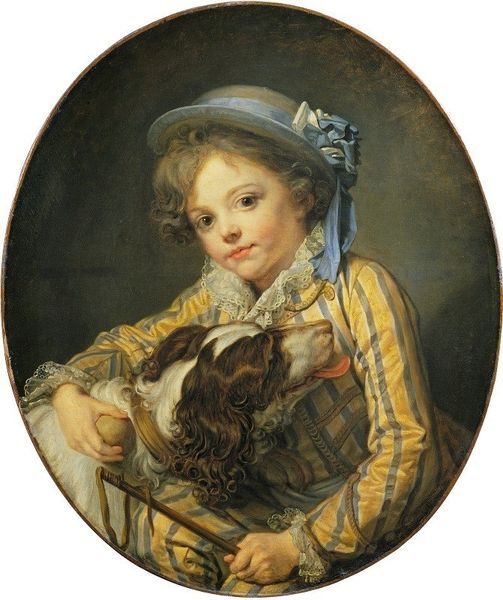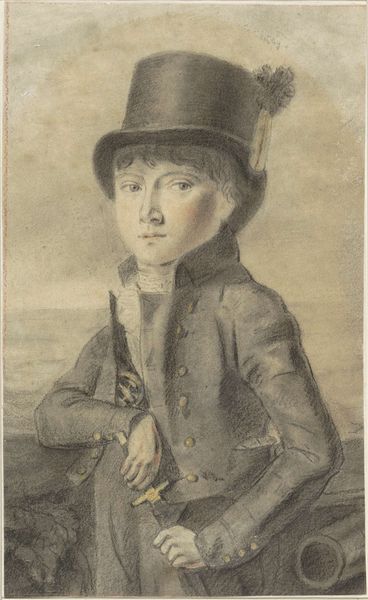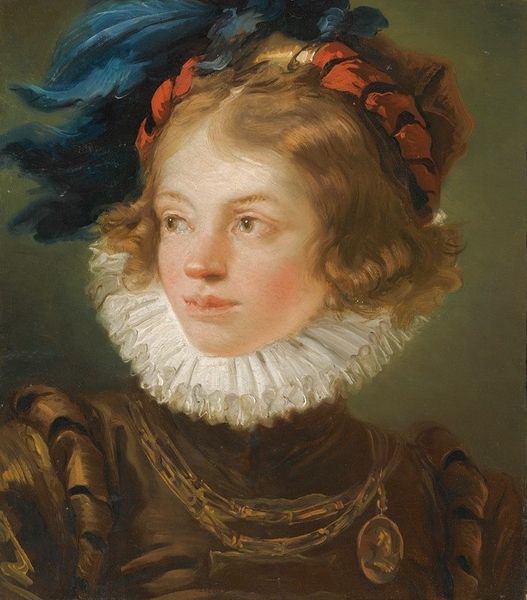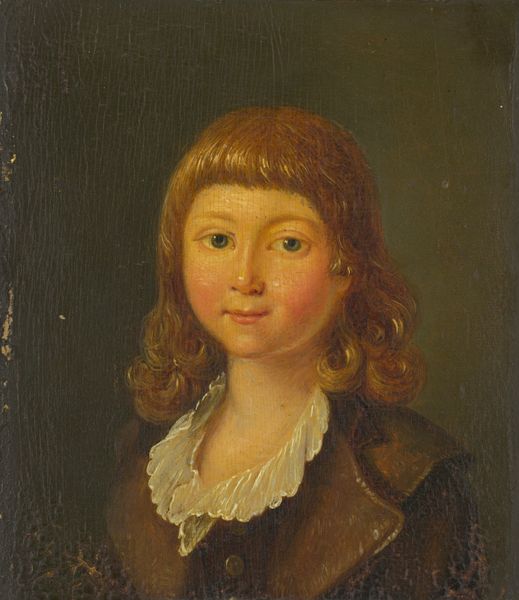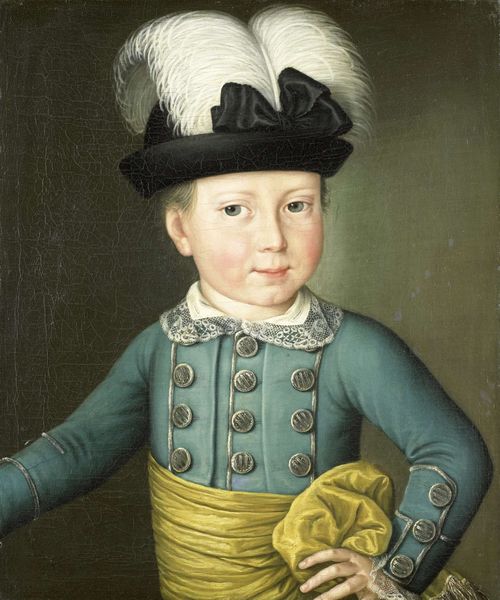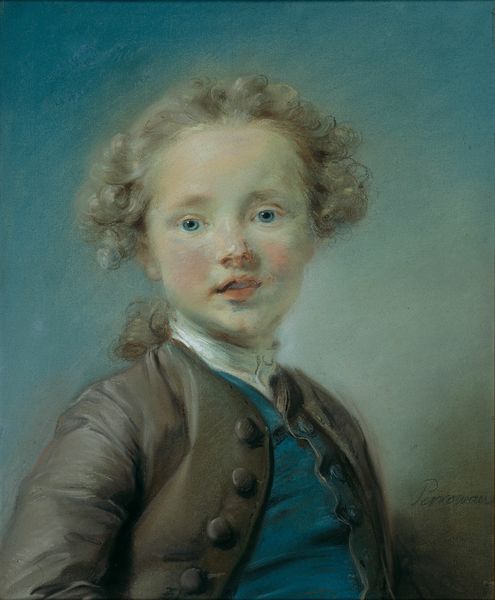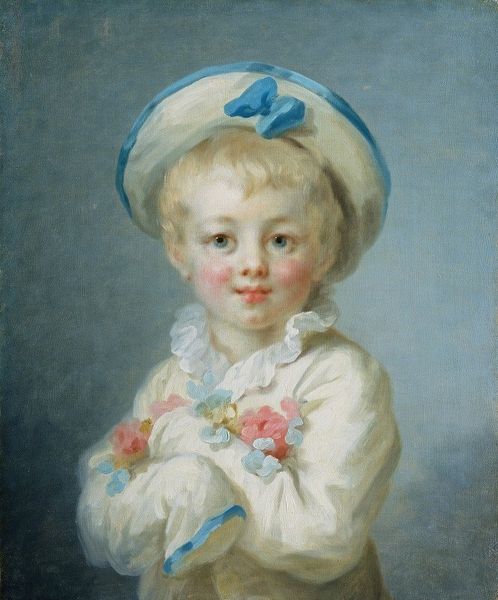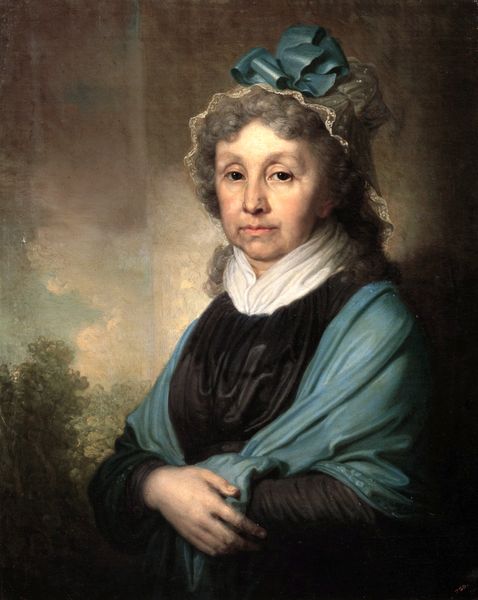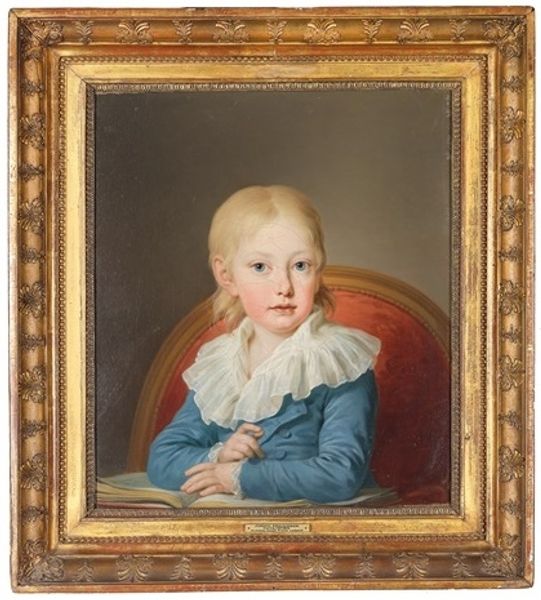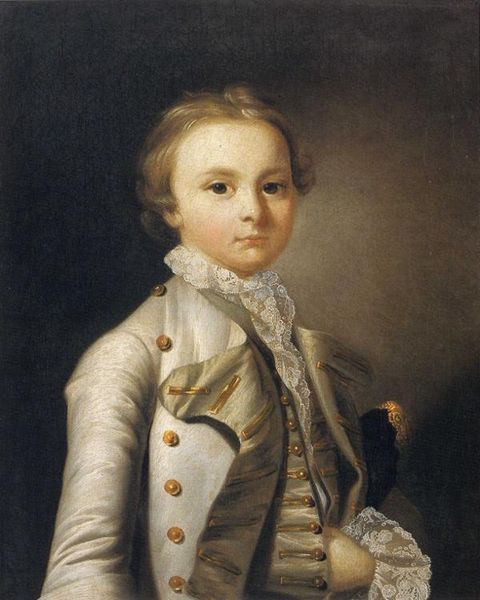
Copyright: Public domain
Curator: The work before us, created in 1777, is entitled "Portrait of a Child." The artist is Jean-Baptiste-Siméon Chardin. Editor: My initial impression is one of understated elegance. The subdued color palette creates a sense of quiet intimacy. Look at how the dark hat juxtaposes against the pastel background! Curator: Indeed. Chardin was, during the mid-18th century, deviating from the prevailing fashion for flamboyant, idealized aristocratic portraiture. Instead, he captured this young subject with a remarkable degree of naturalism, reflecting the Enlightenment era's shifting social values, valuing individual representation rather than rigid, staged aristocratic presentation. Editor: Absolutely. Chardin masterfully manipulates light to give the figure a certain presence. It isn't theatrical, as other contemporary portraiture. Instead, observe the soft contours, achieved with delicate gradations of tone; light subtly illuminates the child's face, creating a compelling three-dimensionality. Note how this softly models the fabric of his coat and hat! Curator: That quietude, in the era of pre-revolutionary France, spoke to an emerging market of patrons who favoured simple genre paintings and intimate, bourgeois portraiture. Rather than heroic, mythic themes that pleased the academies, you began seeing artists engage the everyday, creating the familiar. It’s worth noting that Diderot greatly admired Chardin, whose painting embodied a morality, emphasizing earnest virtue. Editor: The hat with its feathery embellishments adds a bit of playfulness. And those slightly unruly curls that escape! The loose brushwork softens the otherwise formal composition. He isn’t rigid in pose nor presentation; it’s an intelligent counterpoint. The semiotic relationships between the formal structure and subtle, "child-like" painterly details speak volumes. Curator: These paintings are cultural artifacts—expressions of changing expectations and perceptions of the role of children, and domesticity, in an increasingly complicated and morally conflicted pre-Revolutionary French society. It marks the changing role of the family, private space and what is represented as virtue. Editor: It’s true; through art historical context we gain insightful knowledge. Still, I admire how the artist employed what he had available formally. It allows the piece to linger, evoking the delicate beauty of a fleeting moment.
Comments
No comments
Be the first to comment and join the conversation on the ultimate creative platform.
